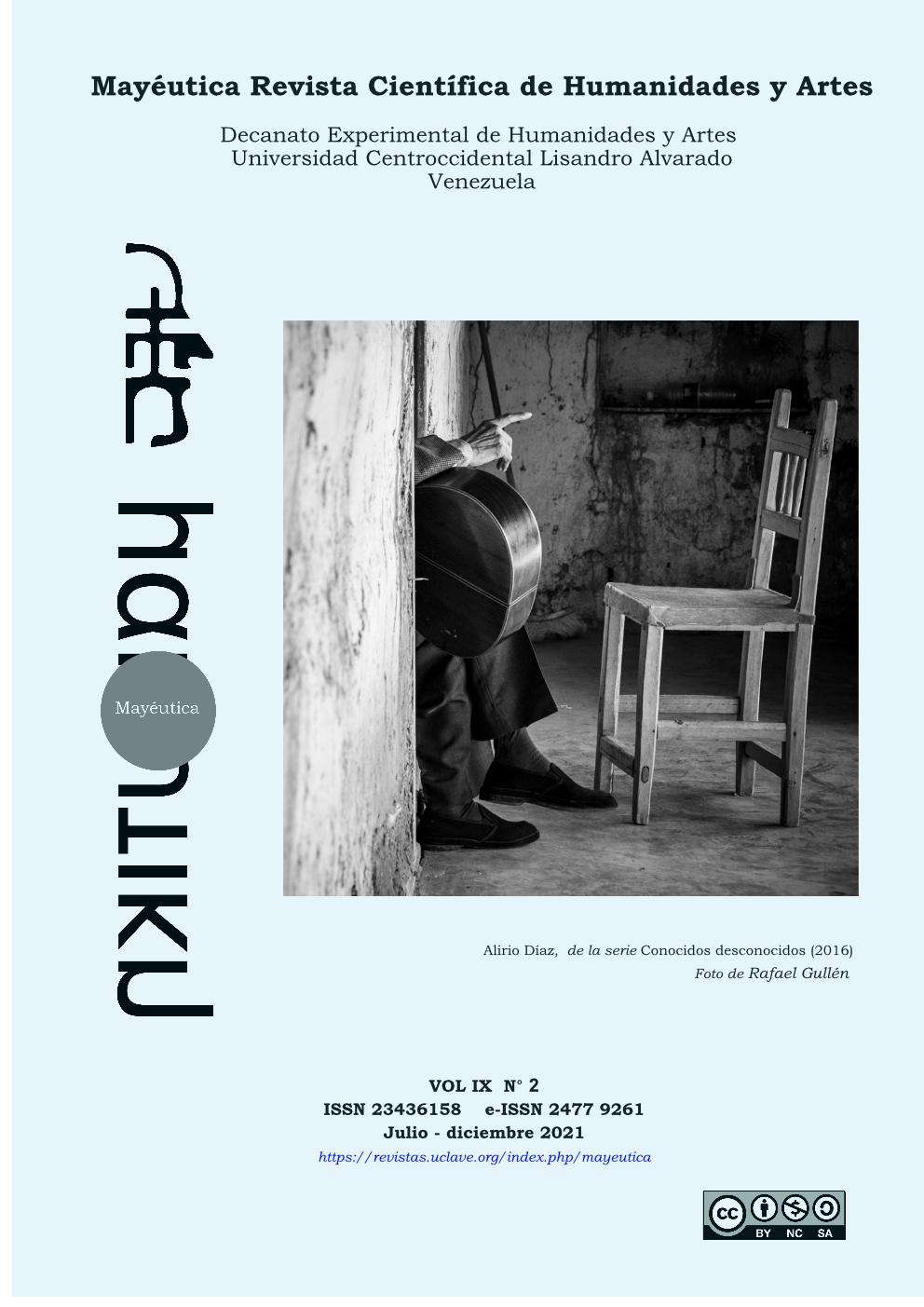Social and cultural meaning of two pictorial works by Oswaldo Guayasamín
Keywords:
cultural semiotics, painting, cultural context, GuayasamínAbstract
The main goal of this study lies in revealing the social and cultural significance of Oswaldo Guayasamín for Ecuador, he was an emblematic figure in the field of Plastic Arts in that country. From a methodological point of view, the current study is a qualitative research with a hermeneutic approach. It is an empirical documentary study centered on primary sources. The design corresponds to the descriptive transactional nonexperimental research. To achieve the objective, a reference corpus of two works by the Ecuadorian artist was used; they were analyzed with Iuri Lotman Theory support, using the cultural semiotic method, as well as the exegetic technique that allows valuing hermeneutically the selected pictorial corpus. So, the objective of this discussion is to analyze four works of the author, with support of Iuri Lotman's theory, using the author's cultural semiotic method, as well as the exegetic technique that allows to hermeneutically assess the selected pictorial corpus. The main findings include: Guayasamín's paintings express a vision that defends the rights of the indigenous race, especially women and children. These paintings date back to the twentieth century when unfair treatment and contempt, abuse, violence, and exploitation of mestizo cultures, indigenous and black, were evident at a time full of world wars, civil wars, and exploitation. The application of the theoretical aspects of Iuri Lotman revealed that Guayasamín's paintings are a
demonstration of his time background reality and show indigenous people’s feelings of suffering, anger, and frustration in a particular historical context..
Downloads
References
Hurtado, I y Toro, J. (2005). Paradigmas y métodos de investigación en tiempos de cambio. Episteme Consultores Asociados C. A.
Lara, F. (2018). Hacia una educación del Sumak Kawsay a través de la propuesta artística de Oswaldo Guayasamín.
Lotman, I. (2000). Semiosfera III, semiótica de las artes y la cultura. Cátedra.
Lotman, I. (2003). La Semiótica de la cultura y el concepto de texto. Entretextos. Revista electrónica Semestral de estudios de la Cultura. Lotman desde América. Suplemento. http://www.ugr.es/~mcaceres/entretextos.htm
Llisterri, J. y Torruella, J. (1999). Diseño de scorpus textuales y orales. In Blecua. J.M. Clavería, G. Sánchez y J. Torruella (eds). En Filología e
informática. Nuevas tecnologías en los estudios filológicos, pp. 4577. Milenio.
Martínez Miguélez, M. (2004). Ciencia y Arte en la Metodologia Cualitativa. Editorial Trillas.
Morales Campos, A. (Diciembre, 2018). Análisis semióticocognoscitivo del arte rupestre de La Pasiega. La Colmena 100. pp. 8191
ISSN 14056313 eISSN 24486302. Universidad Michoacana de San Nicolás de Hidalgo, México. https://lacolmena.uaemex.mx/article/view/11213/9633
Olarte Rebellón, V. (2017). Análisis Semiótico de la Representación Femenina Comunicada en Cuatro Obras de la Pintora Colombiana Lucy Tejada. (Trabajo de Titulación de Comunicación Social y Periodismo. Universidad Autónoma de Occidente. Cali, Colombia.)
Ordónez, A. (2000). ¡Carajo soy un indio! Me llamo Guayasamín”: La construcción social de las razas en el Ecuador. Un estudio de caso.
(Maestría en Ciencias Sociales, Mención Estudios Ecuatorianos FLACSO, Ecuador).
https://universidadabiertachile.files.wordpress.com/2013/11/carajosoyunindiomellamoguayasamin.pdf50
Perea, M. (2015). Osvaldo Guayasamín Del vientre de la huaca, al hueso: La permanencia. Escena. Revista de las artes, Volumen 74, Número 2, págs. 97108 ISSN 14092522. https://revistas.ucr.ac.cr/index.php/escena/article/view/21168
Reguera, A. (2008). Metodología de la investigación lingüística. Editorial Brujas.
Rodríguez Álvarez, A., y Rodríguez Martínez, P. (Diciembre, 2017). Arte, cultura, sociedad e imaginario estético: redimensiones desde las nociones de espacio y tiempo históricos. Mayéutica. Revista Científica de Humanidades y Artes, 5, 101137. Barquisimeto Lara. Venezuela.
https://revistas.uclave.org/index.php/mayeutica/article/view/580
Vivas, R. (2018). Análisis Semiótico del cuadro “Ternura” de Oswaldo Guayasamín. (Trabajo de curso. Doctorado Artes. Facultad de Artes,
Pontificia Universidad Católica de Chile) https://www.academia.edu/19469791/Chio_2_Semiotica_TRABAJO_ORIGINAL
Published
How to Cite
Issue
Section

This work is licensed under a Creative Commons Attribution-NonCommercial-ShareAlike 4.0 International License.





